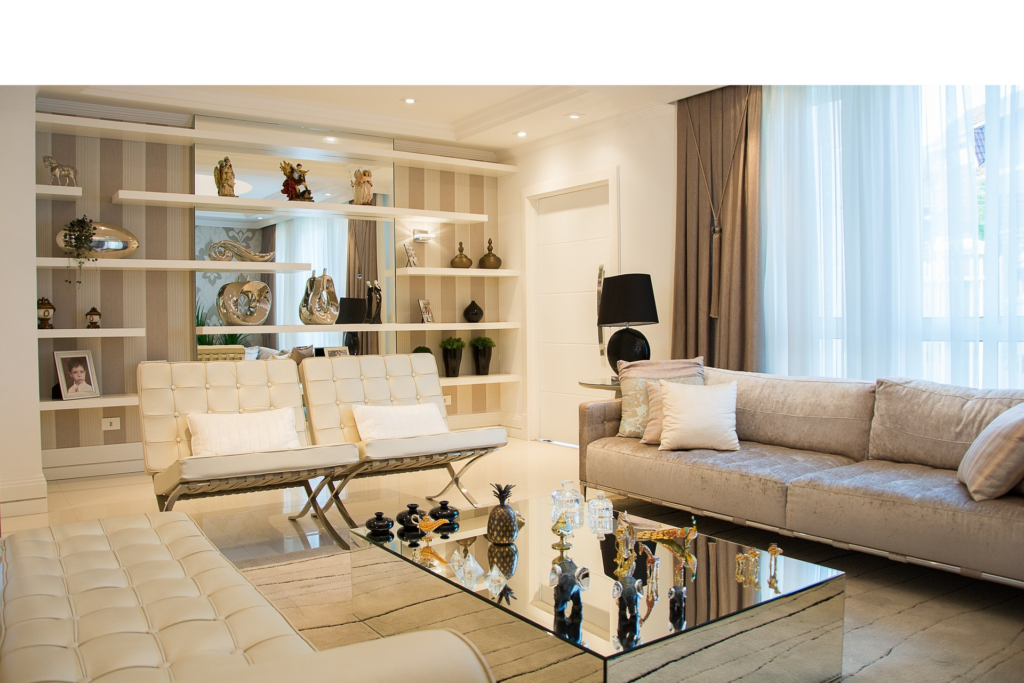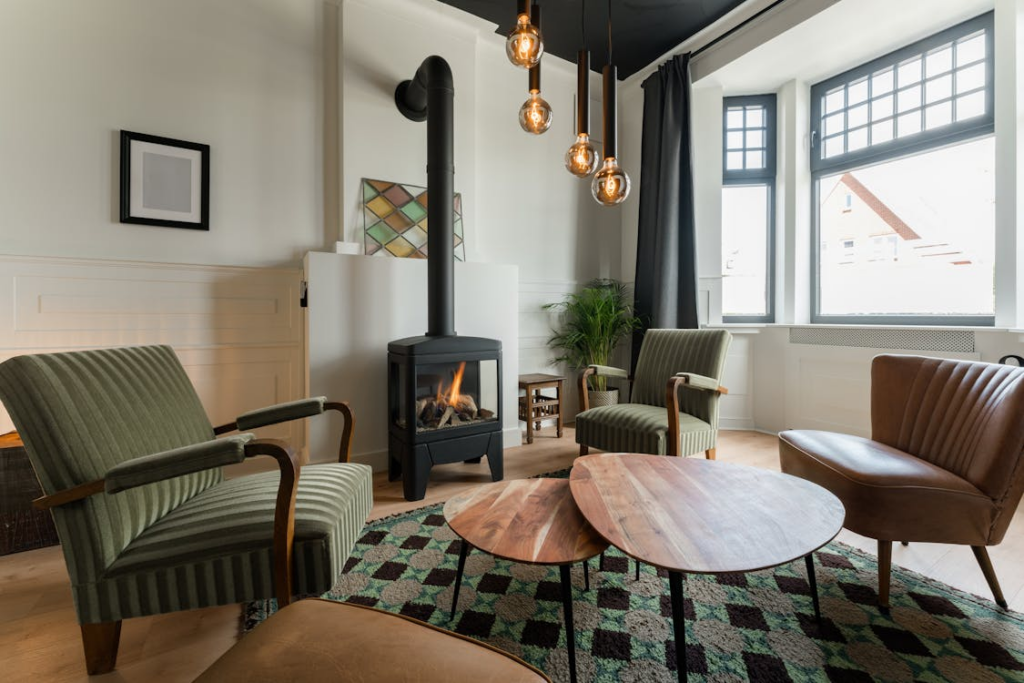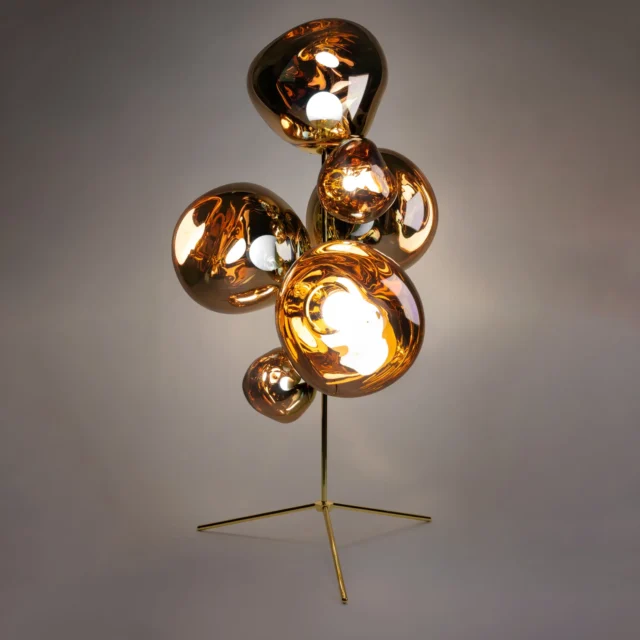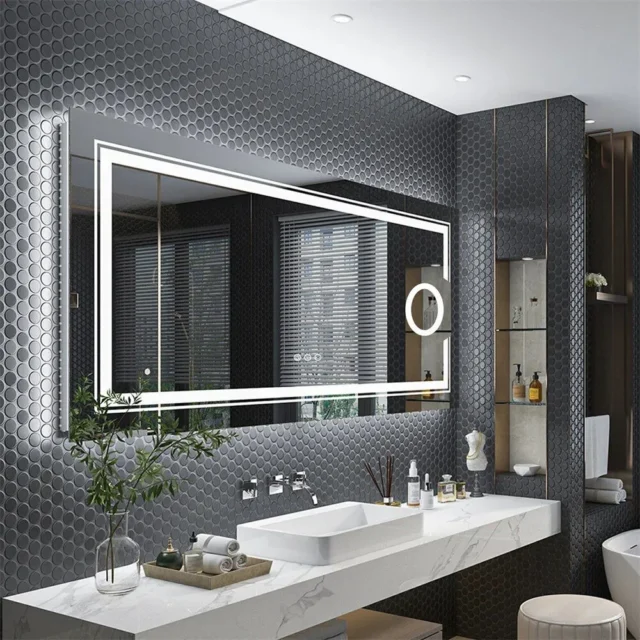2025 Best Quiet Luxury: Creating Elegance and Sophistication in Your Home

Quiet luxury represents a transformative approach to interior design, championing understated elegance over ostentatious displays. This philosophy shifts the focus from overt opulence to nuanced, thoughtful expressions of taste and quality. By blending timeless design elements with sustainability and craftsmanship, quiet luxury redefines sophistication.
What Is Quiet Luxury?
Quiet luxury is a design philosophy that whispers elegance through refined simplicity. It prioritizes quality, timeless aesthetics, and functional beauty over flashy or fleeting trends. By embracing minimalism with depth, this approach celebrates materials, craftsmanship, and balance.

The Core Tenets of Quiet Luxury
Mindful Minimalism
Quiet luxury doesn’t equate to stark or characterless minimalism. Instead, it emphasizes intentional curation. Spaces are thoughtfully designed with clean lines, open layouts, and harmonious arrangements, ensuring every element contributes meaningfully.
Material Mastery
High-quality, natural materials lie at the heart of quiet luxury. Whether it’s hand-finished wood, natural stone, or fine textiles, the emphasis is on durability, texture, and authenticity. Subtle imperfections in these materials enhance their character and tell a story.
Timeless Vintage Touches
Incorporating vintage elements brings historical depth to interiors. Pieces such as a weathered oak table or a patinated bronze sculpture connect spaces to a legacy while maintaining modern relevance.

Designing with Quiet Luxury in Mind
The Power of Architecture
Quiet luxury begins with foundational design. Subtle details like crown moldings, window casings, and seamless material transitions elevate the ambiance. These understated features create a backdrop for carefully curated furnishings.
Harmony and Balance
Every element in a quiet luxury space contributes to visual rhythm and cohesion. Whether through the arrangement of seating or the alignment of architectural features, harmony is essential for a serene environment.
Craftsmanship Over Trends
Prioritize durability and enduring design over transient styles. Furniture and decor should stand the test of time, both aesthetically and physically, ensuring they remain relevant and beautiful for generations.

Key Materials in Quiet Luxury
Natural Woods
Materials like oak, walnut, and maple are prized for their enduring beauty. Quarter-sawn oak, with its striking grain patterns, adds depth, while walnut lends richness and warmth.
Stone Surfaces
Stone elements like honed marble and limestone exude quiet opulence. Their natural variations and subtle veining provide texture without overwhelming the design.
Textiles
Luxurious fabrics such as Belgian linen and mohair velvet contribute both comfort and elegance. These textiles age gracefully, adding character to spaces over time.
Metals
Unlacquered brass, bronze, and brushed nickel add refined accents. Their ability to develop a patina over time enhances their authenticity and visual appeal.
The Art of Color in Quiet Luxury
Neutral Palettes
Quiet luxury relies on neutral tones to create a soothing atmosphere. Shades of beige, warm gray, and creamy white blend effortlessly, allowing natural light to enhance the space.
Layered Complexity
Subtle variations in neutral tones create depth and movement. For example, a taupe wall may shift hues throughout the day, responding to changes in natural light.
Texture in Color
Neutral palettes are elevated through textured materials. A linen sofa paired with a wool rug, or velvet cushions, introduces richness without relying on bold contrasts.

Quiet Luxury and Sustainability
Quiet luxury naturally aligns with sustainability through its emphasis on longevity and mindful consumption. Here’s how:
Natural and Renewable Materials
- Responsibly harvested woods, such as FSC-certified oak.
- Renewable materials like bamboo and cork for innovative solutions.
Sustainable Textiles
- Organic linens and recycled fabrics ensure luxury with minimal environmental impact.
- Fabrics crafted from recovered materials tell a story of preservation.
Local Sourcing
- Collaborating with local artisans reduces carbon emissions while supporting regional craftsmanship.
- Handmade pieces add authenticity and a unique touch to interiors.
Repurposing and Restoring
- Refurbishing vintage furniture or restoring architectural elements extends the life of materials and maintains character.
Practical Tips for Creating Quiet Luxury Spaces
Curate Thoughtfully
Edit your space to include only essential and meaningful elements. Remove clutter to allow carefully chosen pieces to shine.
Invest in Architecture
Upgrade structural features like moldings, built-ins, and windows to create a refined foundation.
Choose Timeless Furniture
Opt for classic, well-crafted furniture with clean lines. A linen-upholstered sofa or vintage leather chair can anchor a room beautifully.
Layer Lighting
Combine ambient, task, and accent lighting to set the mood. Thoughtfully designed fixtures act as subtle decorative elements.
Incorporate Textures
Blend various materials such as wool, velvet, and linen for a tactile experience.

FAQs
What is quiet luxury in interior design?
quiet luxury is a design approach that prioritizes understated elegance, focusing on quality, timeless materials, and thoughtful curation over ostentatious displays.
How does quiet luxury differ from minimalism?
While minimalism often involves stripping away elements, quiet luxury embraces a curated approach, combining functionality with refined aesthetics to create warmth and depth.
Why are materials so important in quiet luxury?
Materials define the tactile and visual experience. High-quality, natural materials like stone, wood, and linen age gracefully, adding authenticity and timeless beauty.
How can I make my home more sustainable with quiet luxury?
Use responsibly sourced materials, refurbish vintage furniture, and collaborate with local artisans to reduce your environmental footprint while enhancing your space.
Can Quiet luxury be achieved on a budget?
Yes. Focus on fewer, high-quality items and prioritize timeless design. Repurpose vintage pieces or invest in durable materials for a long-lasting impact.
What colors work best for quiet luxury?
Neutral tones such as beige, gray, and white create a calming palette. Layer these hues with texture to add depth and interest.
Conclusion
Quiet luxury redefines modern interior design by prioritizing quality, sustainability, and thoughtful curation. Its timeless approach creates spaces that are both elegant and enduring, fostering tranquility and sophistication. By embracing this design philosophy, homeowners can craft interiors that resonate with authenticity and understated beauty.
Inbound Links:
- Explore the benefits of sustainable interior design.
- Discover timeless design ideas for luxurious interiors.
Outbound Links:









Leave a comment